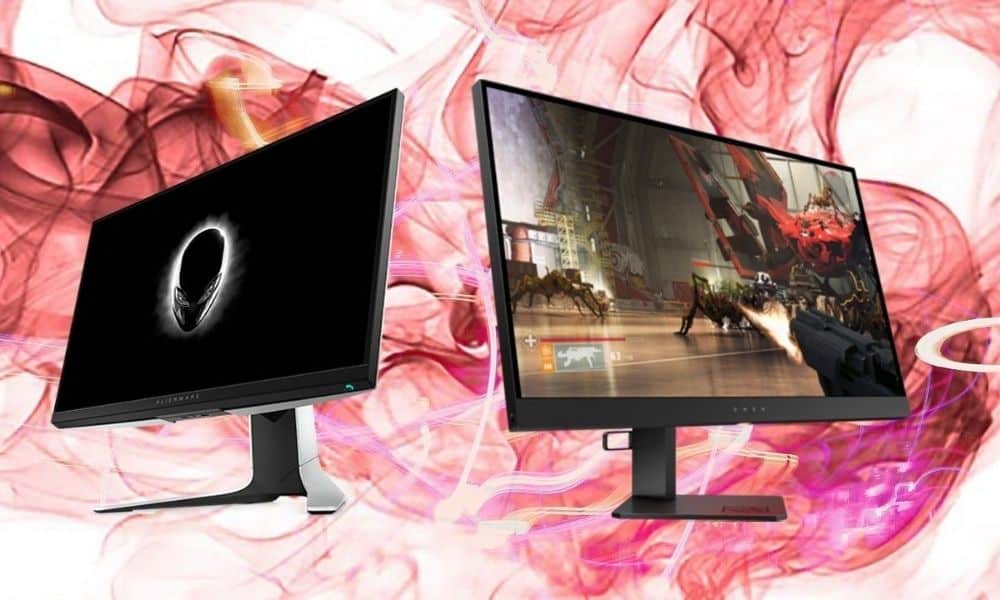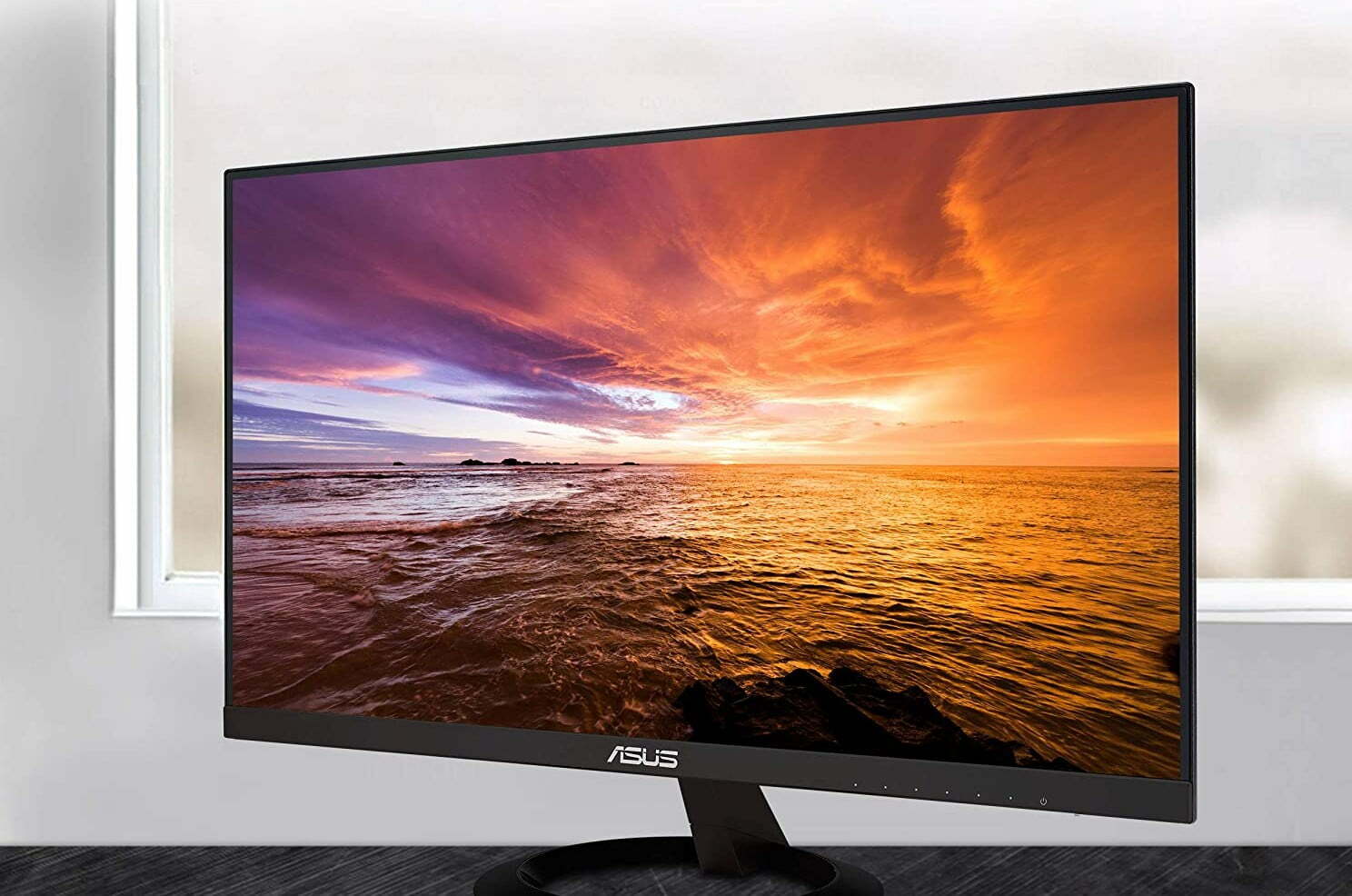Key Takeaways:
- Understanding the contrast ratio can help you get the best image quality out of your display
- Windows, macOS, and most displays all allow for plenty of calibration options
- Contrast ratio is especially important in dark scenes. Just as color gamut is equally important
If the games you play and movies you watch on your best computer display, HDR monitor, or HDTV seem a bit washed-out or not as detailed as they should despite high resolutions and high-end settings, you might want to look into adjusting your contrast ratio.
What is Contrast Ratio?
Contrast ratio (which we’ll refer to here sometimes as “CR” is defined by the range between the luminance (brightness) of the brightest white and the darkest black that any given monitor or tv can display. More technically speaking, luminance is a number used to measure the intensity of light present on any given surface, as expressed in candelas per square meter (ced/m²)- more commonly referred to as “nits.” The contrast ratio of a display is determined by measuring the luminance of white and black and then calculating the ratio between the two extremes. If you’re conscious about your eye health, check out our guide on the best monitor settings for eyes.
It’s particularly noticeable in dark scenes in a game or video, where shades of black will be a prominent part of the image, but it makes a huge overall difference in image quality and sense of detail and depth regardless of the image, and it’s a concept a lot of people aren’t aware of. Luckily, Windows, macOS, and most modern displays all offer plenty of calibration options to ensure that you’re getting the best contrast ratio possible for your system, like the quality contrast you can see on an HDR computer monitor.
Related Posts:
- How to Change the Brightness on Your PC Display
- What is Monitor Viewing Angle and Why Does it Matter?
Comparing Contrast Ratio in Displays
Contrast ratio is generally expressed in product descriptions of most HDTVs computer displays using the default value of 1000:1- that is, a range of approximately 999 nits between the blackest black and most luminous white a display can generate at default settings. Here, default settings would be defined as brightness= 50, contrast= 50, and gamma (if offered) = 50- both in the native display window, with high contrast mode set to off if using Windows 10.
In terms of CR numbers, the higher, the better, so it’s good to look for numbers of anywhere from a fairly standard 1000:1 to an exceptional 3000:1. There is, however, a caveat here- if a product is described as having a contrast ratio higher than 3000:1, it’s most likely purely a marketing gimmick, and not really a noticeable or effective ratio.
Tip: if a product is described as having a contrast ratio higher than 3000:1, it’s most likely purely a marketing gimmick
As ever, though, you should trust your own eyes before anything else. If you happen to be shopping for a new television or display in-store, take the time to check the contrast ratio between products, and test settings while you’re at it. Due diligence in this regard will pay off.
Lastly, a factor many don’t consider when purchasing a new display is ambient light– or the light in a room or space falling directly on the display. This will have a real impact on your perception of contrast and is something you should consider when hunting for a new monitor or HDTV. If you want to learn about more monitor setting guides, check out how to fix input lag on a monitor.
Related Posts:
STAT:
The average contrast ratio of computer monitors is 1000:1
https://www.projectorcentral.com/projector-contrast-ratio.html
LED televisions often boast CR and DCR numbers of 10,000:1 or more
https://www.projectorcentral.com/projector-contrast-ratio.html
Luminance is commonly expressed in units call nits
https://www.ubergizmo.com/what-is/nit-lux-lumen/
Sources:
*https://www.avadirect.com/blog/how-to-choose-a-gaming-monitor/
https://www.projectorcentral.com/projector-contrast-ratio.htm
https://www.cnet.com/news/contrast-ratio-or-how-every-tv-manufacturer-lies-to-you/




































![Best 27 Inch Computer Monitor in [year] 27 Best 27 Inch Computer Monitor in 2025](https://www.gadgetreview.dev/wp-content/uploads/how-to-buy-the-best-computer-monitor.jpg)
![Best BenQ Monitors in [year] 28 Best BenQ Monitors in 2025](https://www.gadgetreview.dev/wp-content/uploads/best-benq-monitor-image.jpg)
![Best ASUS Monitors in [year] 29 Best ASUS Monitors in 2025](https://www.gadgetreview.dev/wp-content/uploads/best-asus-monitor-image.jpg)
![Best Dell Monitors in [year] 30 Best Dell Monitors in 2025](https://www.gadgetreview.dev/wp-content/uploads/best-dell-monitor-image.jpg)
![Best HP Monitors in [year] 31 Best HP Monitors in 2025](https://www.gadgetreview.dev/wp-content/uploads/best-hp-monitor-image.jpg)
![Best Lenovo Monitors in [year] 32 Best Lenovo Monitors in 2025](https://www.gadgetreview.dev/wp-content/uploads/best-lenovo-monitor-image.jpg)
![Best ViewSonic Monitors in [year] 33 Best ViewSonic Monitors in 2025](https://www.gadgetreview.dev/wp-content/uploads/best-viewsonic-monitor-image.jpg)
![Best Gigabyte Monitors in [year] 34 Best Gigabyte Monitors in 2025](https://www.gadgetreview.dev/wp-content/uploads/best-gigabyte-monitor-image.jpg)
![Best Monitors for PS4 Pro Gaming in [year] 35 Best Monitors for PS4 Pro Gaming in 2025](https://www.gadgetreview.dev/wp-content/uploads/best-monitors-for-ps4-pro-image.jpg)
![Best Monitor for Xbox Series X in [year] 36 Best Monitor for Xbox Series X in 2025](https://www.gadgetreview.dev/wp-content/uploads/best-monitor-for-xbox-series-x-image.jpg)
![Best Acer Monitors in [year] 37 Best Acer Monitors in 2025](https://www.gadgetreview.dev/wp-content/uploads/best-acer-monitor-image.jpg)
![Best MSI Monitors in [year] 38 Best MSI Monitors in 2025](https://www.gadgetreview.dev/wp-content/uploads/best-msi-monitor-image.jpg)
![Best SAMSUNG Monitors in [year] 39 Best SAMSUNG Monitors in 2025](https://www.gadgetreview.dev/wp-content/uploads/best-samsung-monitor-image.jpg)
![Best LG Monitors in [year] 40 Best LG Monitors in 2025](https://www.gadgetreview.dev/wp-content/uploads/best-lg-monitor-image.jpg)
![Best AOC Monitors in [year] 41 Best AOC Monitors in 2025](https://www.gadgetreview.dev/wp-content/uploads/best-aoc-monitor-image.jpg)
![Best Philips Monitors in [year] 42 Best Philips Monitors in 2025](https://www.gadgetreview.dev/wp-content/uploads/best-philips-monitors-image.jpg)
![Best Monitors For PUBG in [year] 43 Best Monitors For PUBG in 2025](https://www.gadgetreview.dev/wp-content/uploads/best-monitor-for-pubg-image.jpg)
![Best Stream Decks in [year] 44 Best Stream Decks in 2025](https://www.gadgetreview.dev/wp-content/uploads/best-stream-deck-image.jpg)
![Best Monitors for Streaming in [year] 45 Best Monitors for Streaming in 2025](https://www.gadgetreview.dev/wp-content/uploads/best-monitor-for-streaming-image.jpg)
![Best Monitors For Flight Simulator in [year] 46 Best Monitors For Flight Simulator in 2025](https://www.gadgetreview.dev/wp-content/uploads/best-monitor-for-flight-simulator-image.jpg)




















